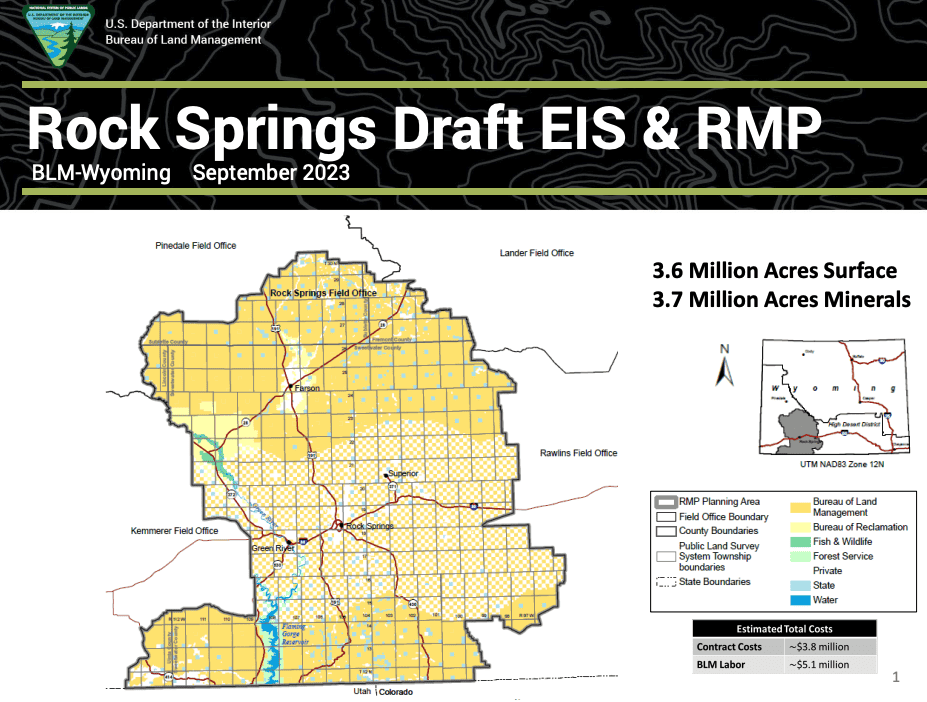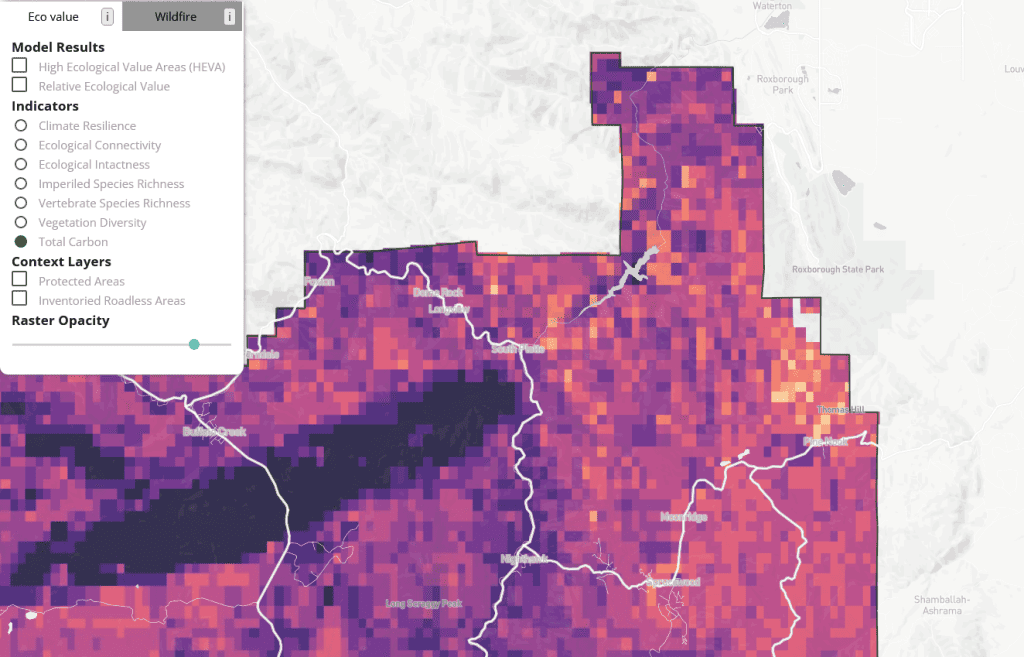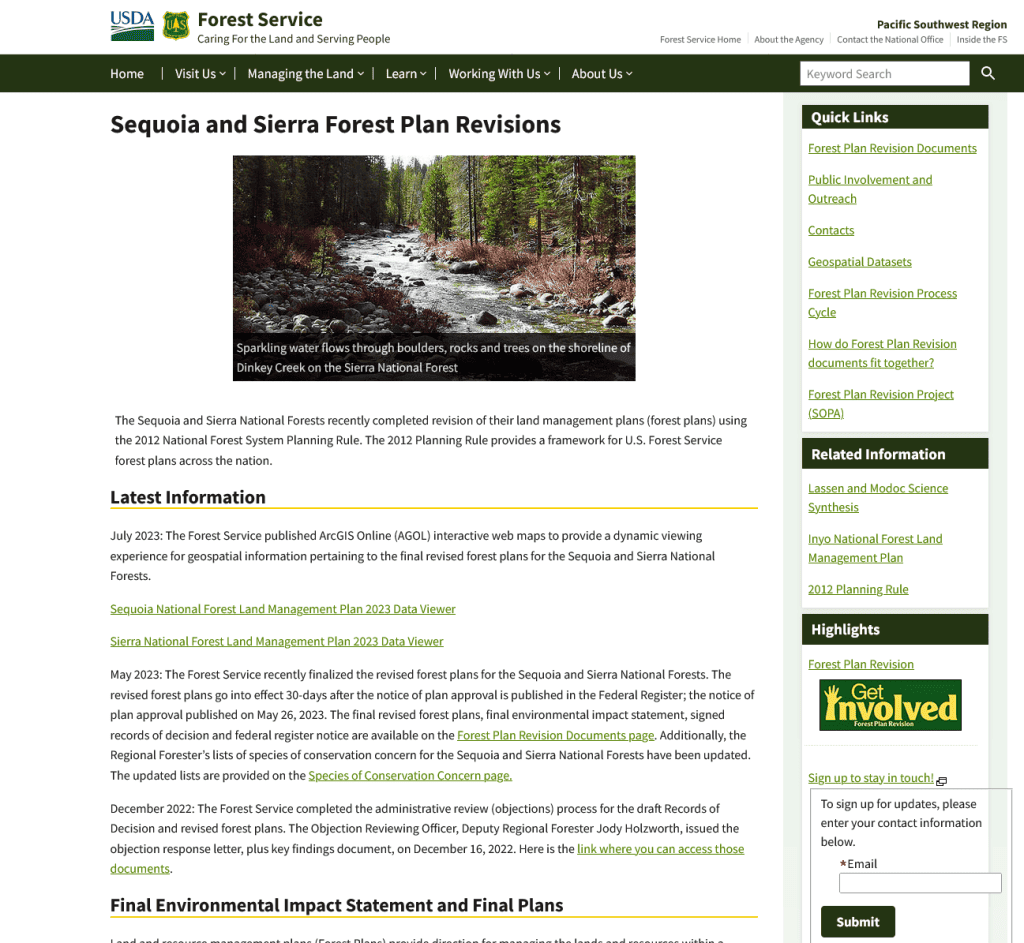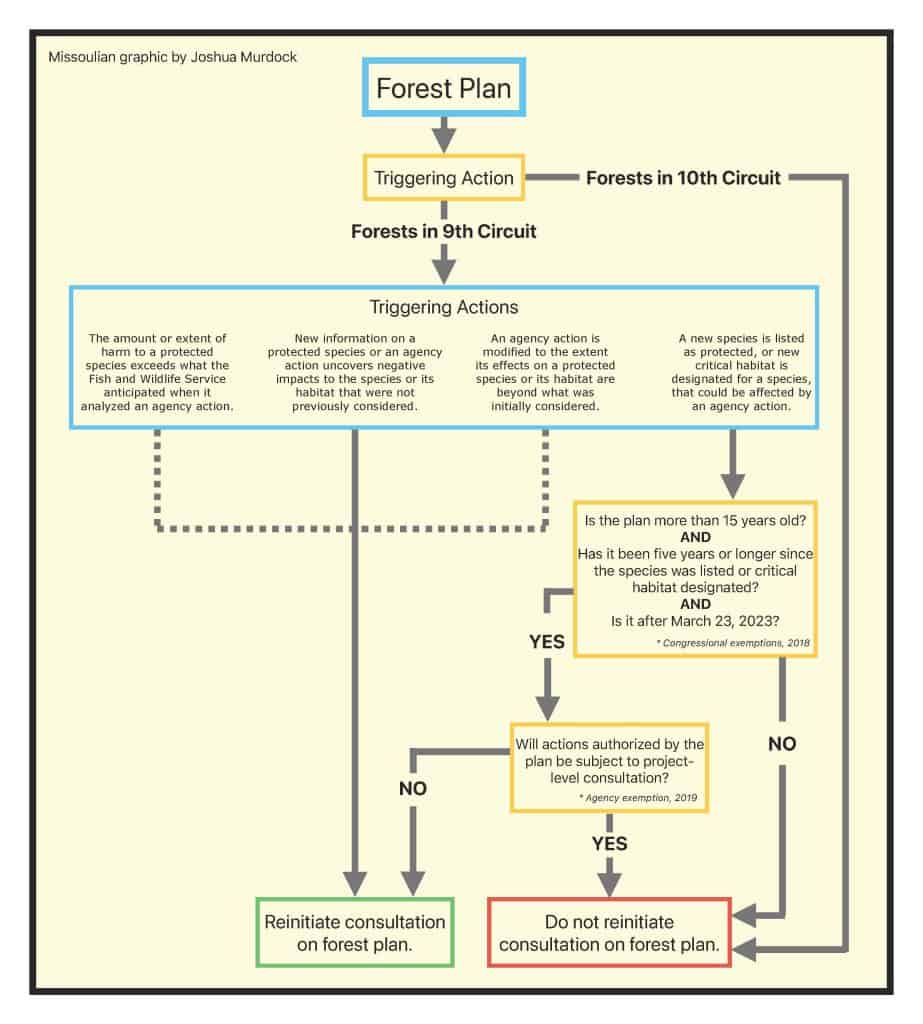
Once upon a time, in a city far away, the U. S. Forest Service posted its schedule for revising national forest plans on its national website. There was even a map showing the revisions completed under the 2012 Planning Rule. Today, they are not where they used to be on the website, and I couldn’t find them anywhere else. Maybe they didn’t like what I (or others) were doing with the information?
The last schedule that I saved was from May, 2022. I have compiled the current information on the plans listed in that schedule and a few others that I am aware of below, roughly in order of their status, from those completed to those just starting. I counted 14 completed and 16 officially ongoing revisions (if I have missed any, let me know).
COMPLETED REVISIONS
These plans were completed prior to May, 2022
- Francis Marion (2017)
- Flathead (2018)
- El Yunque (2019)
- Inyo (2019)
- Chugach (2020)
- Rio Grande (2020)
- Helena-Lewis and Clark (2021)
- Custer-Gallatin (2022)
The American Bar Association recently provided this favorable critique of the El Yunque revised plan.
No policy better reflects the agency’s increased awareness about the importance of understanding and utilizing local stakeholders than the 2019 plan’s “all-lands” management approach, which aims to bring landowners and stakeholders together to identify common goals for the forest.
These plans have been completed and adopted since May, 2022
- Carson (July 8, 2022)
- Cibola (July 15, 2022)
- Santa Fe (July 29, 2022)
- Nantahala Pisgah (February 2023)
- Sierra and Sequoia (May 2023)
Here is a commentary from Wild New Mexico on the three New Mexico plans. The Sequoia revised plan is discussed in this article. We discussed the Nantahala Pisgah possible lawsuit here.
It’s worth noting that lawsuits against these revised plans have been scarce. The Flathead has had two (one is discussed here) and there is a case currently pending against the Rio Grande (discussed here). Have I missed any? (The Colville revised plan litigation, discussed here, was developed under the previous planning regulations.)
PENDING REVISIONS (header links are to the Forest Service web page)
- Tonto – objection instructions letter
On May 19, 2023, the Regional Forester issued her final instructions to the Tonto Forest Supervisor and responded to the eligible objectors. These final instructions included changes the forest must make to the final plan or supporting documents before the Forest Supervisor may sign the Record of Decision and implement the new plan. Some additional information is in this article.
The objection filing period ended June 20, 2023. The Forest Service received objections from 14 individuals or organizations. An objection resolution meeting was scheduled for August 28.
The proposed final plan and FEIS were released August 30 and the objection period runs until October 30. A couple of articles covered the release – here and here.
The draft EIS was released in December, 2019. The FEIS is listed as “Proposed” “Summer 2023.” However, a recent article is now saying “by the end of the calendar year.”
- Gila – draft EIS completed
The official 90-day comment period for the draft documents ended April 16th, 2020.
The draft plan and EIS were available for public comment until November 2021. Local news suggests it’s not going smoothly: “Personally I believe you are trying to do the best that you can,” Jeff Bilberry, chairman of the Chaves County Board of Commissioners, said to Forest Service representatives. But he added soon after, “I am going to agree with former commissioner (Will) Cavin that we need to go back and start over again and let’s do this right so we don’t have everybody sitting here wondering what is fixing to happen.”
The Manti-La Sal National Forest released its proposed Land and Resource Management Plan and DEIS on Aug. 18. Public comments on the DEIS are being accepted until November 16.
In September 2019, Forest Supervisor Chuck Mark announced the Salmon-Challis National Forest will evaluate the 1988 Salmon Forest Plan and the 1987 Challis Forest Plan separately. A new timeline will be developed once public feedback has been gathered to inform steps moving forward.
Public comments on the draft assessment were sought last summer.
- Lolo – draft assessment completed
Public meetings are ongoing to discuss the final assessment, need for change and developing the plan. A Notice of Intent to prepare an EIS is currently expected in January, 2024.
The Bridger-Teton National Forest aims to have the draft assessment report available for public review by late fall per this article. (And they are getting some help.)
- Blue Mountains (Malheur, Umatilla, and Wallowa-Whitman) – restarting assessment
The most recent effort to revise the plan failed in 2019, and now the Forest Service is restarting the process, beginning the assessment process in June and public meetings are scheduled for this fall. Some background is provided here.
No forests in the area covered by the Northwest Forest Plan have formally started the revision process. A Bioregional Assessment was prepared in 2020. Based on the Bioregional Assessment findings, land management plans may be amended or revised at the same time or in groups according to common features like geography and ecosystems.
The most urgent need is to restore fire’s natural role in the frequent-fire dependent ecosystems closest to communities in the eastern Cascade Mountains, Klamath Mountains of southern Oregon and northern California, and the southern Coastal Mountains.
Based on that urgency, a cohort of northern California units and the Rogue River-Siskiyou National Forest in Southern Oregon are being considered as the first to begin plan modernization. Northern California cohort includes the Klamath and Butte Valley Grassland, Six Rivers, Shasta-Trinity, and Mendocino National Forests.
OTHER “PROGRAMMATIC” DECISIONS
On August 21, the Forest Service proposed to change the name of the Wayne National Forest in Ohio to the Buckeye National Forest. The national forest is currently named after General (“Mad”) Anthony Wayne, whose complicated legacy includes leading a violent campaign against the Indigenous peoples of Ohio that resulted in their removal from their homelands. Buckeye National Forest is one of the names suggested to the Forest Service by American Indian Tribes. But of course, Republicans have politicized it.







